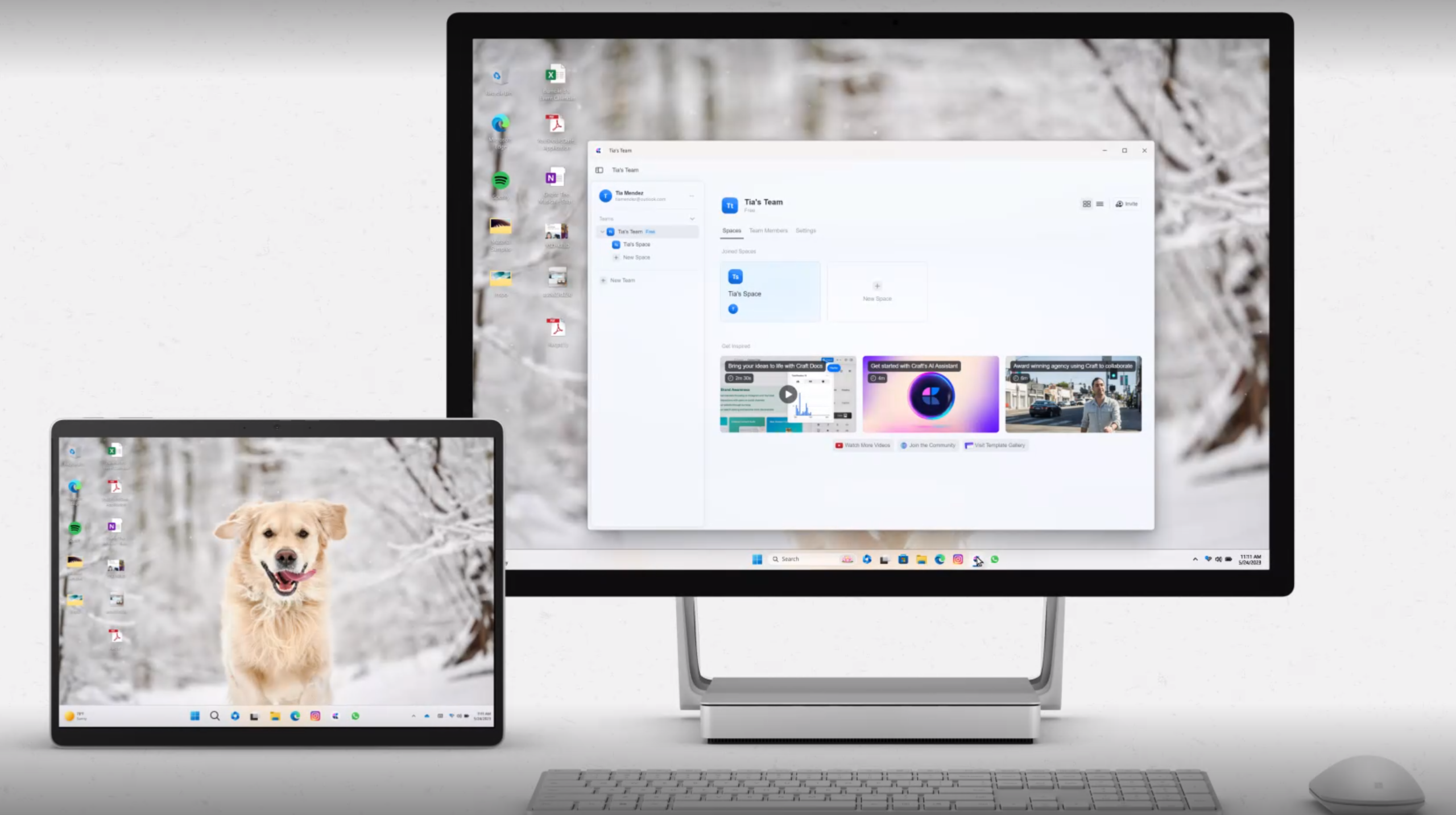Migrating to a new Windows PC can be a daunting task, but with a little planning and the right tools, you can make the transition smoothly and efficiently. Whether you’re upgrading for better performance, more storage, or simply because your old machine has seen better days, this guide will walk you through each step of the process.
Introduction
Upgrading to a new Windows PC is an exciting yet challenging task. It’s more than just moving your files; it’s about ensuring that your new PC is set up exactly how you want it, with all your apps, settings, and preferences intact. This comprehensive guide will help you navigate the process, ensuring a smooth and successful migration.
Preparing for the Migration
Before diving into the migration, it’s essential to take stock of your current PC setup. This includes noting the applications you use, the data you need, and any specific settings or configurations you want to replicate on your new machine.
Assessing Your Current PC Setup
Start by listing all the software installed on your current PC. Make a note of any license keys or activation codes, as you’ll need these for reinstallation. Identify the files and folders you use most frequently and any custom settings that make your workflow smoother.
Gathering Necessary Tools and Software
Next, gather the tools you’ll need for the migration. This might include an external hard drive for backups, a reliable internet connection for cloud storage solutions, and any necessary cables for direct file transfer.
Backing Up Important Data
Before you start the migration, back up all important data. This ensures that even if something goes wrong during the transfer, your files are safe. There are several ways to back up your data, including using an external hard drive, cloud storage services, or creating a system image.
Choosing the Right Tools
There are various tools available to help you migrate your data from your old PC to your new one. Some of these are built into Windows, while others are third-party applications designed to make the process easier.
Built-in Windows Tools
Windows offers built-in tools like OneDrive for cloud storage and Windows Backup for creating system images. These tools are convenient and integrated into the Windows ecosystem, making them easy to use.
Third-Party Software Options
For more advanced needs, third-party software like EaseUS Todo PCTrans or Laplink PCmover can offer more comprehensive solutions, including transferring applications, settings, and files in one go.
Backing Up Your Data
Backing up your data is a critical step in the migration process. Here’s how you can do it effectively.
Using an External Hard Drive
An external hard drive is a reliable way to back up your data. Simply connect the drive to your PC, and use Windows Backup or a third-party tool to create a copy of your files.
Utilizing Cloud Storage Services
Cloud storage services like OneDrive, Google Drive, or Dropbox offer a convenient way to back up your data. These services store your files online, making them accessible from any device.
Creating a System Image
A system image is a complete copy of your system’s hard drive, including the operating system, applications, and settings. This can be restored to your new PC, giving you an exact replica of your old system.
Transferring Your Data
Once your data is backed up, it’s time to transfer it to your new PC. There are several methods you can use, depending on your needs and the tools at your disposal.
Manual Transfer via External Drives
You can manually transfer your data using an external hard drive. Simply copy the files from your old PC to the drive, then connect it to your new PC and copy the files over.
Using Cloud Services for Transfer
If you’ve backed up your data to a cloud service, transferring it to your new PC is straightforward. Simply log in to the cloud service on your new PC and download the files.
Network Transfer Methods
If both your old and new PCs are on the same network, you can transfer files directly over the network. Tools like Windows Easy Transfer (available in older versions of Windows) or third-party software can facilitate this process.
Installing Windows on the New PC
Before transferring your data, you need to set up your new PC and install Windows.
Setting Up the New PC
Unbox your new PC and connect all necessary peripherals. Power it on and follow the on-screen instructions to set up the initial settings.
Installing the Latest Version of Windows
Ensure your new PC is running the latest version of Windows. If it’s not, use Windows Update to download and install any available updates.
Configuring Initial Settings
During the setup process, you’ll be prompted to configure various settings, such as language, time zone, and privacy preferences. Take your time to ensure these are set correctly.
Restoring Data on the New PC
With Windows installed and configured, it’s time to restore your data.
Transferring Backed-Up Data
If you used an external hard drive or cloud service to back up your data, now is the time to transfer it to your new PC. Copy the files to the appropriate folders and verify that everything has been transferred correctly.
Reinstalling Applications
Next, reinstall the applications you use regularly. Use the list you created earlier to ensure you don’t miss any important software. Don’t forget to enter any necessary license keys or activation codes.
Restoring System Settings
If you created a system image, you can restore your system settings to your new PC. This will replicate your old PC’s configuration, making the transition smoother.
Setting Up User Accounts
User accounts are essential for personalizing your new PC and managing different users.
Creating User Profiles
Create user profiles for each person who will use the PC. This allows each user to have their own settings, files, and applications.
Migrating User-Specific Settings
Transfer any user-specific settings, such as desktop backgrounds, browser preferences, and application settings. This ensures that each user’s experience on the new PC is similar to their experience on the old one.
Managing User Permissions
Set appropriate permissions for each user account. This includes deciding who has administrative privileges and setting up parental controls if necessary.
Installing Essential Software
Once your data and settings are transferred, it’s time to install essential software.
Listing Must-Have Software
Make a list of must-have software for your new PC. This might include office suites, photo editing software, or specialized tools for your work.
Ensuring Compatibility with the New System
Before installing, check that each piece of software is compatible with your new system. Most modern software will be, but it’s always good to confirm.
Transferring Emails and Contacts
Emails and contacts are critical to your workflow, and transferring them correctly is essential.
Exporting and Importing Email Data
Export your email data from your old PC and import it into your email client on the new PC. Most email clients have built-in tools to help with this process.
Syncing Contacts Across Devices
Sync your contacts across devices using services like Google Contacts or Microsoft Outlook. This ensures that your contacts are accessible from any device you use.
Migrating Web Browser Data
Your web browser likely holds a lot of important data, such as bookmarks and passwords.
Transferring Bookmarks
Export your bookmarks from your old browser and import them into the browser on your new PC. Most browsers have built-in tools for this purpose.
Saving and Transferring Passwords
If you use a password manager, transfer your passwords to the new PC. Many browsers also have built-in password managers that can sync your passwords across devices.
Syncing Browser Settings
Sync your browser settings to ensure that your browsing experience is the same on your new PC. This includes things like extensions, themes, and preferences.
Ensuring Security
Security is paramount when setting up a new PC.
Installing Antivirus Software
Install reliable antivirus software to protect your new PC from malware and other threats. Many antivirus programs offer free versions that provide adequate protection.
Updating Security Settings
Configure your security settings to protect your personal information. This includes enabling Windows Defender, setting up a secure password, and configuring privacy settings.
Setting Up Firewalls
Ensure that your firewall is enabled to protect your PC from unauthorized access. Windows includes a built-in firewall that provides robust protection.
Testing and Troubleshooting
Once everything is set up, it’s time to test your new PC to ensure everything works as expected.
Checking for Missing Files or Settings
Go through your files and settings to ensure nothing was missed during the transfer. If you find anything missing, go back to your backups and retrieve the necessary data.
Troubleshooting Common Migration Issues
Be prepared to troubleshoot common migration issues, such as missing files, software compatibility problems, or hardware issues. Many of these can be resolved with a little research and patience.
Ensuring Everything Works Correctly
Test all your applications, files, and settings to ensure everything works correctly. This includes checking email, browsing the internet, and running any specialized software you use.
Optimizing the New PC
To get the most out of your new PC, you may want to optimize its performance.
Removing Bloatware
New PCs often come with pre-installed software that you don’t need. Remove any bloatware to free up space and improve performance.
Tweaking Performance Settings
Adjust performance settings to get the best out of your new PC. This might include tweaking power settings, optimizing startup programs, and adjusting visual effects for better performance.
Ensuring Regular Maintenance
Set up regular maintenance tasks, such as disk cleanup, software updates, and antivirus scans, to keep your new PC running smoothly.
Conclusion
Migrating to a new Windows PC might seem overwhelming, but with the right approach, it can be a smooth and hassle-free process. By preparing adequately, choosing the right tools, and following the steps outlined in this guide, you can ensure a seamless transition. Enjoy your new PC and the enhanced performance and capabilities it offers!
FAQs
What is the best way to back up my data before migrating to a new PC?
The best way to back up your data is to use a combination of an external hard drive and cloud storage. This ensures that you have multiple copies of your important files.
Can I transfer my programs to the new PC?
Yes, you can transfer your programs using tools like EaseUS Todo PCTrans or Laplink PCmover. However, some programs may need to be reinstalled from scratch.
3. How long does it take to migrate to a new PC?
The time it takes to migrate to a new PC depends on the amount of data and the method used for transfer. It can range from a few hours to a couple of days.
4. Do I need to deactivate software licenses on my old PC?
Yes, it’s a good idea to deactivate software licenses on your old PC before migrating. This ensures that you can activate them on your new PC without any issues.
5. What should I do if I encounter issues during the migration process?
If you encounter issues, refer to troubleshooting guides available online or contact customer support for the tools you are using. Many common problems have straightforward solutions.


